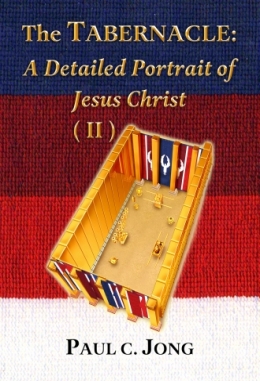- All e-books and audiobooks on The New Life Mission website are free
- Explore multilingual sermons in global languages
- Two new revised editions in English have been released
- Check out our website translated into 27 languages
Due to COVID-19 and disruption to international mail service
we have temporally suspended our ‘Free Print Book service’.
we have temporally suspended our ‘Free Print Book service’.
In the light of this situation we are not able to mail you the books at this time.
Pray that this pandemic will end soon and the resumption of the postal service.
Pray that this pandemic will end soon and the resumption of the postal service.
The Table for the Showbread
The table of showbread, one of the instruments found inside the Tabernacle, was made of acacia wood, and was overlaid with pure gold. Measuring two cubits (90 cm : 3 feet) in length, a cubit and a half (67.5 cm : 2.2 feet) in height, and a cubit (45 cm : 1.5 feet) in width. On the table of showbread 12 loaves of bread were always placed, and this bread could be eaten only by priests (Leviticus 24:5-9).
Among the characteristics of the table of showbread are: it had a frame of a handbreadth all around it; a molding of gold was placed all around this frame; four rings of gold were put on the four corners; and the rings held the poles of acacia wood overlaid with gold that were used to transport the table. The utensils on the table-its dishes, cups, bowls, and pitchers for pouring-were also made of gold.
Exodus 37:11-12 records, "And he overlaid it with pure gold, and made a molding of gold all around it. Also he made a frame of a handbreadth all around it, and made a molding of gold for the frame all around it." The table of showbread in the Holy Place of the House of God had a frame that was as high as a handbreadth, and around the frame a gold molding was placed. Why did God command Moses to place such a frame? This frame of a handbreadth, protruding by about 10 cm (3.9 inches), was to prevent the bread on the table from falling.
As only priests could eat the bread that was placed on the table of showbread, so must we become the ones who can eat this bread spiritually. Only those who have been saved from sin and received eternal life by believing in the baptism of Jesus Christ and the blood of the Cross-in other words, only those who believe in the gospel of the water and the Spirit as their salvation-can eat this bread.
Related sermons
Download Related Recommended Books





![The TABERNACLE : A Detailed Portrait of Jesus Christ (I) [New Revised Edition] The TABERNACLE : A Detailed Portrait of Jesus Christ (I) [New Revised Edition]](/upload/book/TheTABERNACLE_ADetailedPortraitofJesusChristILEN9.jpg?ver=1752567754)


